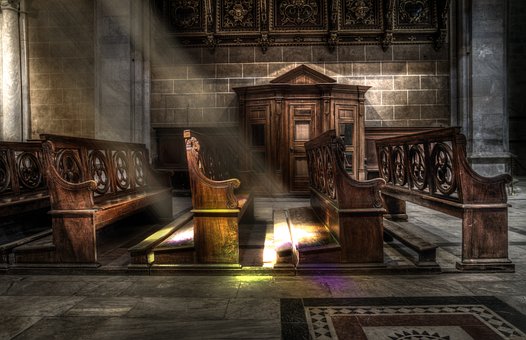The 79th Venice International Film Festival ended on 10 September. Italy presented five prestigious films in competition: “Bones and all” by Luca Guadagnino, “The lord of the ants” by Gianni Amelio, “Chiara” by Susanna Nicchiarelli, “The immensity” by Emanuele Crialese and “Monica” by Andrea Pallaoro. Among these feature films there is a religious film: “Chiara”.
In the film in question, for the first time, St. Clare of Assisi is the protagonist and not the simple supporting partner of St. Francis, as instead happens in numerous audiovisual works of Franciscan origin. To impersonate the founder of the Poor Clares is Margherita Mazzuccoan actress who has established herself by playing the role of Elena Greco in the famous telefilm “The brilliant friend”. Instead, he gives body and soul to the Poverello from Assisi Andrea Carpenzanoemerging actor who has taken part in committed films such as “La terra dell’abbondanza” by Damiano and Fabio D’Innocenzo.
With “Chiara” Nicchiarelli gives us a revolutionary Chiara who, in a strongly patriarchal ecclesial world such as the medieval one, takes the decision to leave his family to follow the example of poverty proposed by St. Francis and to autonomously found the second Franciscan order of the Poor Clares. Apart from the protagonist’s escape from the paternal home and a few glimpses of Francis’ trip to Morocco, Nicchiarelli sets the whole film within the walls of the small church of San Damiano, seat of the Poor Clares. This choice is dictated by the desire to represent Chiara as the fulcrum around which the small world of the nuns founded by the saint revolves.
Coming out of the films in competition, it was presented in Venice, in the section “Days of the Authors”, another religious film which attracted the attention of the experts and not: “Padre Pio” by Abel Ferrara. In this feature film, Ferrari themes such as religion, redemption and violence within decadent metropolises are present. The film begins with the arrival of Padre Pio in San Giovanni Rotondo in 1920, when the small town is upset by a terrible clash between peasants and landowners, which cost the lives of thirteen people and a consequence of the general impoverishment caused by the First World War. It is in this context of endemic violence and poverty that the religious and redemptive figure of St. Sergio Castellitto and from Michele Placido in their respective fiction. The demanding role of the friar with the stigmata is performed very well by Shia LaBeoufa versatile actor with a broad curriculum ranging from blockbuster action games like “Indiana Jones and the Kingdom of the Crystal Skull” by Steven Spielberg to films such as “Honey boy” by Alma Har’el. LaBeouf himself provides us with a beautiful testimony of life thanks to this film, as he lived through difficult years on a personal level and during the making of the feature film, while studying the life of Padre Pio in depth, he converted to Catholicism.
The presence of films such as “Chiara” and “Padre Pio” suggest the fact that, as has already happened in the past, religious cinema will also have an important place in Italian cinema in the future.
The return of faith in the hall

